40 years of Sinulog, the making of one of the country’s grandest festivals

Basak San Nicolas contingent performs in Cebu City street during the Sinulog Tribu sa Kabataan 2020. The Sinulog, which began 40 years ago with only 200 college students participating has become one of the grandest festivals in the country today. | Gerard Francisco
CEBU CITY, Philippines — Around 200 college students from seven universities in Cebu City gathered at the Basilica Minore del Santo Niño grounds on January 19, 1980 to dance the “Sinug” for the first time.
Wearing Filipinana clothes, they danced to the beat of the drums that resembles the current (sulog) of the Pahina River. They either raised candles or the miraculous image of the Señor Santo Niño while they danced.
On that day, one of the grandest festivals in the Philippines, the Sinulog, was born.
Forty years later, the Sinulog has evolved into a festival that is now known around the globe.
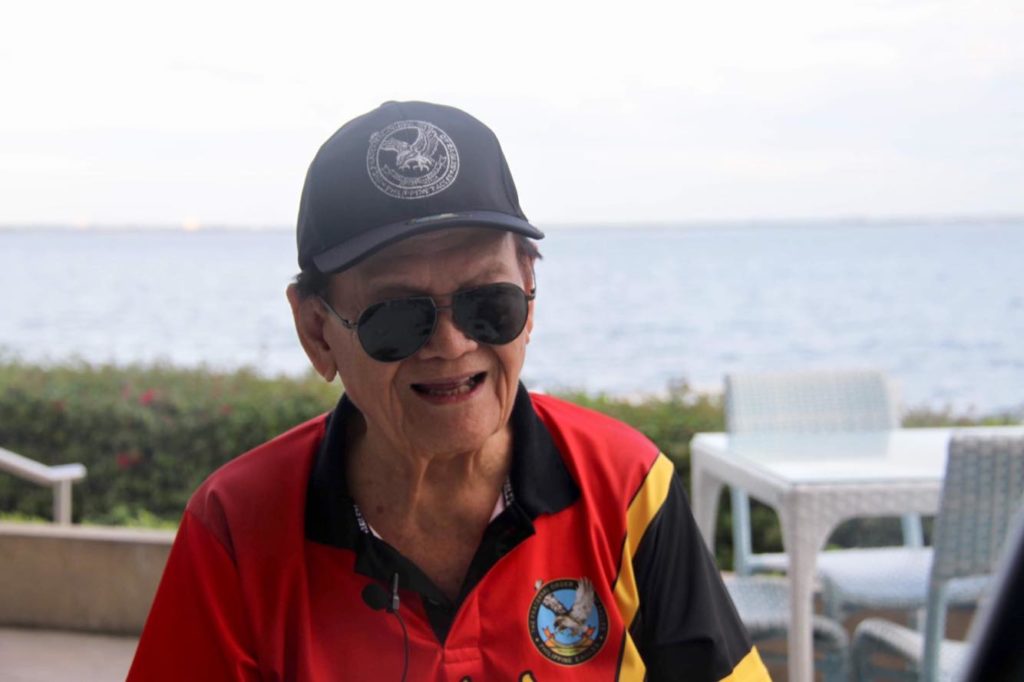
Former Customs collector, David “Boy” Odilao Jr., who is considered as the father of the Sinulog, shares how the festival started in an interview in Cebu City. | CDND / Raul Constantine Tabanao
Former Customs Collector David “Boy” Odilao Jr., who is also known as the father of the Sinulog festival, said that the popularity that the annual festival had gained had continued to amaze him.
“We only wanted to create a festival that is truly Cebuano. Inato. Atoa nga mailhan tang Sugboanon. (Ours. Something that would identify us as Cebuanos),” he said in an interview with CDN Digital.
This year, a total of 26 contingents will be competing in the Sinulog Grand Parade scheduled on January 19. Of the contingents, 16 have registered for the Free Interpretation (FI) category and another 10 for the Sinulog Based (SB) category.
Participants will include a guest contingent from South Korea, who will showcase traditional Korean dances.
Odilao said that the first Sinulog festival was simple and it was funded by the community compared to what it is today where it is very grand.
“There are many opportunities for the SFI (Sinulog Foundation Inc.) to search for sponsors, and it is now worth millions.
However, back then, he said, the Sinulog festival remembered the essence of the halad (the offering) to the Santo Niño, which the new generation might have forgotten nowadays.
“Sinulog is not party-party. It’s not only kiat-kiat. It is a celebration of faith and culture,” Odilao said.
Ritual Dance
Sinulog is considered a ritual dance that is in honor of the miraculous image of the Señor Santo Niño. Performers move to the beat of the drums that resembles the current (sulog) of the Pahina River in Cebu City.
Candle vendors at the Basilica continue to dance the traditional Sinulog dance for a fee to pray for blessings all year round.

Candle vendors at the Basilica del Santo Niño offer a prayer dance to the Child Jesus for devotees before lighting the candle. | CDN file photo
But the dance becomes the center of attention every January of each year in celebration of the annual feast of the Holy Child.
Odilao, 82, told CDN Digital that he had never imagined of starting what was now one of the biggest, if not the biggest, festival in the country.
The Leyte native recalled that everything started during his assignment to Cebu in the 1970s after having worked as Customs Collector in Manila.
While in Cebu, he was also named Regional Director of the Ministry of Sports and Youth and Development (MSYD) in June 1978.
Odilao said it was General Fabian Ver, a personal friend, who nominated him to become the MSYD director on a concurrent capacity during the administration of former President Ferdinand Marcos.
Since their was no money to spend, ministry directors were picked from among holders of government positions in Central Visayas. After their selection, they were made to undergo trainings on youth development, history and culture in Los Baños, Bulacan.
“When we were in training we were asked, ‘What do you know in your region that will represent the identity of Filipinos?’ I said, we have two in Cebu — the Battle of Mactan and the Señor Santo Niño. So they asked me, ‘Can you do it?’ So I said, with the support of the ministry, I will do it!” Odilao recalled.
In 1979, Odilao painstakingly organized the “Bahug-bahug sa Mactan,” or what is now more commonly known as the “Kadaugan sa Mactan.”
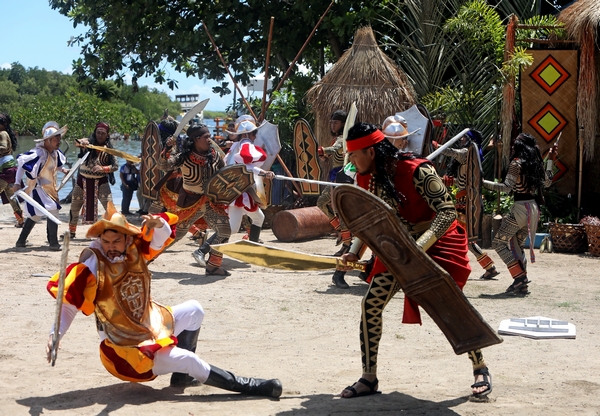
The first Bahug-Bahug sa Mactan, which is known today as the “Kadaugan sa Mactan, in 1979 serves as a template of Boy Odilao on how to organize the first Sinulog in 1980.
Since the MSYD had no money, Odilao and the rest of the ministry in Central Visayas went to prominent politicians such as “elite” congressman, the late Ramon Durano; influential businessmen such as Don Ricardo “Carding” Silverio; and prominent Cebuano families such as the Aboitiz and Benedicto clans.
Gathering P330,000, the “Bahug-Bahug sa Mactan” was successfully established in Lapu-Lapu City and at the battle site was constructed the first-ever monument of the first Filipino hero, Lapulapu.
The success of the reenactment of the Battle of Mactan paved the way for the Sinulog festival to be realized in Cebu City.
“The modest success of the battle of Mactan was there. Sa akong sunod nga project was Sinulog sa Sugbo, (In my next project, the Sinulog of Cebu) we already knew what to do,” said Odilao.
The Sinulog
The dancers of the “Bahug-bahug sa Mactan” were actually the same dancers of the first Sinulog festival. All of them were college students who were exempted from their Physical Education (P.E.) classes for joining the two events.
It was not easy, as Odilao said they had to train the students of the traditional Sinulog dance with the traditional beat of the drums.
Unlike today, when the Sinulog is taught in schools, students in the 1980s were unfamiliar with the original “two steps forward, one step backward” Sinulog steps, of which most Cebuano children now know by heart.
Odilao said that a dance demonstration at the then Cebu Doctors’ College (now Cebu Doctor’s University) by Estelita “Nang Titang” Diola, was organized for the students so they could learn the steps.
Diola was the oldest Sinulog dancer in the province, who died in 2013 at the age of 88.
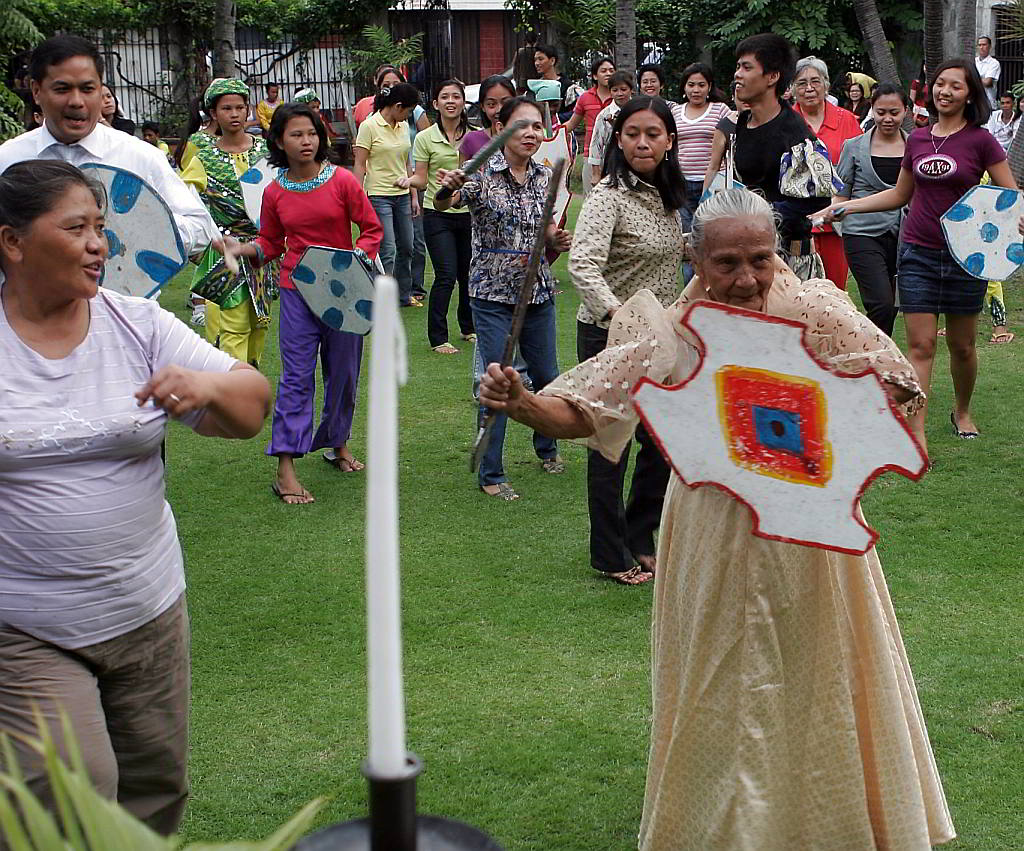
Estelita “Titang” Diola, who passed away in 2013, has taught generations of dancers how to dance the original Cebuano “sin’ug” beat and prayer dance, which was taught to her by her father. | CDN file photo
The demonstrations carried on to the other schools such as the then Colegio del San Jose-Recoletos (now University of San Jose Recoletos), University of San Carlos, University of Cebu, University of the Southern Philippines Foundation, then Cebu Institute of Technology (now Cebu Institute of Technology University), Southwestern University, and Cebu Doctor’s College.
These schools, which were part of the Cebu Physical Educations Associations, formed the first seven tribes of Sinulog.
“In the first Sinulog, we danced around the Basilica. Moshagit og ‘Pit Señor,’ o ‘Sangpit sa Señor’, kay halad man kini sa Santo Niño. (We cried ‘Pit Señor’ or ‘Praise the Lord’, because this was an offering to the Santo Niño),” said Odilao.
Then Cebu City Mayor Florentino Solon actively supported the festival and the city government helped organize the event.
The support of the government was essential in keeping the festival alive for the next 40 years.
40 years of dancing
Two years of organizing the Sinulog came to an end for Odilao when he was promoted as a Regional Collector in the Caraga Region in Mindanao. He turned over the Sinulog to the Cebu City Historical Committee in 1982.
After Odilao’s departure from Cebu, Mayor Solon held a key position in the growth of the Sinulog festival as he continued the work on what Odilao had left behind.
At this time, the Sinulog has already gained popularity in the region as it was a fresh perspective from the already established festivals of Ati-atihan in Aklan and Dinagyang in Bacolod City, Negros Occidental.
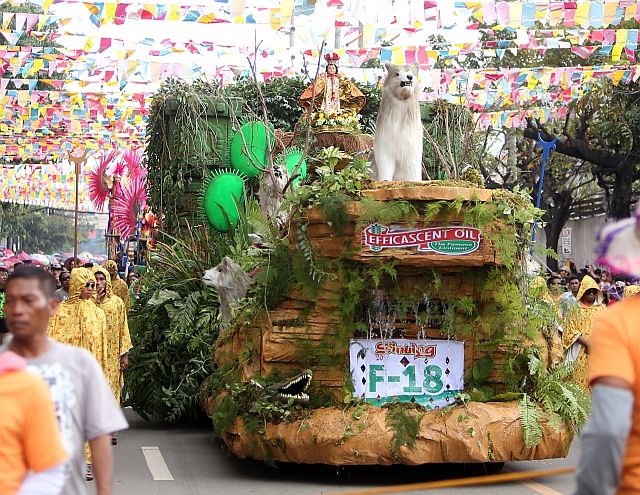
Floats have been introduced in 1981 or a year after the Sinulog was first held. Floats then depicted historical scenes of the arrival of the Señor Santo Nino. | CDN file photo
In 1981, floats have also been introduced depicting the historical scenes of the arrival of the Señor Sto. Niño in Cebu.
The Sinulog Foundation Incorporated (SFI) was born three years after in 1985, as the city government sought to institutionalize the Sinulog Festival, allowing the independent foundation to gather funds and organize the festival with less political influence from the city government.
In the next five years following Odilao’s departure, Sinulog would experiences hitches as the festival seemed to imitate the Ati-atihan and Dinagyang Festivals in costume, make-up, martial arts drum beats, and dance, losing the essence of the Sinulog.
Following this confusion, Sinulog workshops were conducted by the Cultural Center of the Philippines, National Commission on Culture and Arts, and Philippine Fold Dance Societies in the different cities and towns in Cebu.
Schools were encouraged to teach students the dance steps as well, to preserve the intangible heritage.
The workshops garnered positive results as to this day, Sinulog is identified for its uniqueness and its basic steps of “two steps forward and one step backward.”
On January 19, 2020, Sinulog will be celebrating its 40th year, gloriously named as one of the country’s grandest festival.
“I did not expect that. Who could expect Sinulog to be as big as it is today?” he said.
Sinulog 2020
Odilao retired in Cebu after his career as a customs collector, choosing to take root in Talisay City.
Yet the Father of Sinulog is not retiring from organizing the Sinulog festival.
Although he never became officially part of the SFI, Odilao closely helped the organization and the Cebu City government organize the Sinulog festivals for the past 40 years.
In 2020, he has helped organize the Sinulog sa South Reclamation Area (which is really the South Road Properties), which will showcase the Baruto sa Regata contest on January 17, 2020, where boats will try to outsail each other at the Mactan Channel.
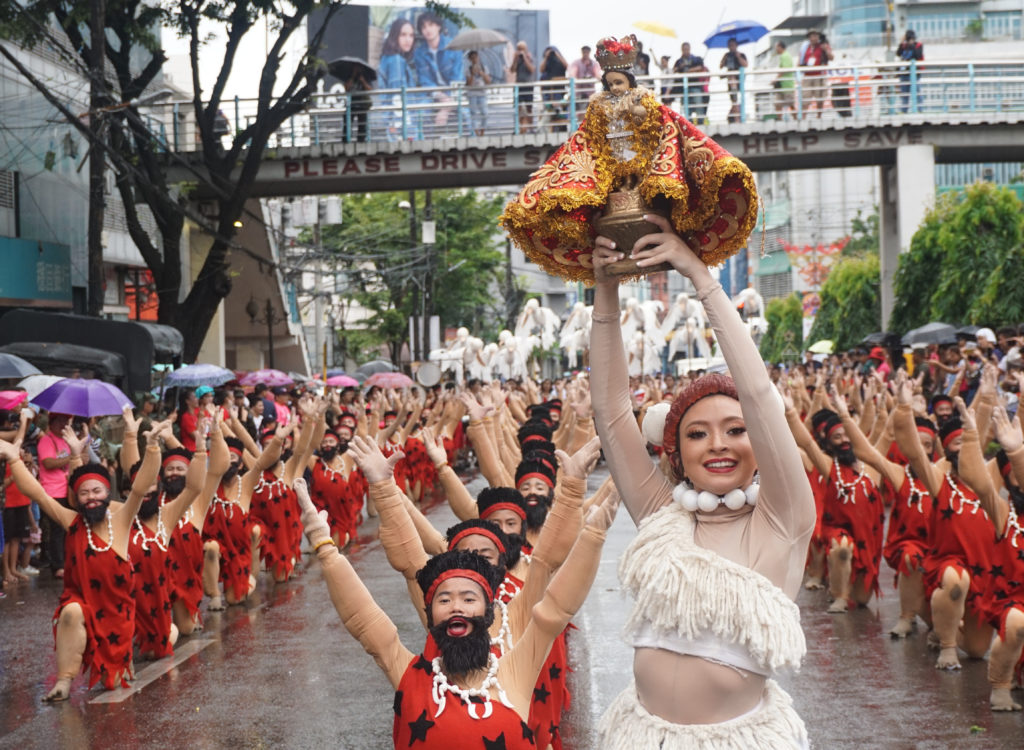
Barangay Labangon contingent performs their street dance routine during the Sinulog Tribu Kabataan 2020 on January 12, 2020. |CDND Photo/Gerard Vincent Francisco
For Odilao, the Sinulog has become an event to be proud of all over the world, an undeniable and truly Cebuano festival, a dream he once made in 1980.
He only hopes that as the Sinulog festival continues to wow the Filipinos of its grandeur, art, and creativity, the young Cebuanos will never forget its essence.
“Sinulog is a prayer. It was organized for the youth as a reminder to pray to Santo Niño, mosangpit sa Señor. Unta dili na makalimtan sa mga batan-on (to praise the Señor Santo Niño, I hope the youth never forgets this),” said Odilao. /dbs
Disclaimer: The comments uploaded on this site do not necessarily represent or reflect the views of management and owner of Cebudailynews. We reserve the right to exclude comments that we deem to be inconsistent with our editorial standards.
